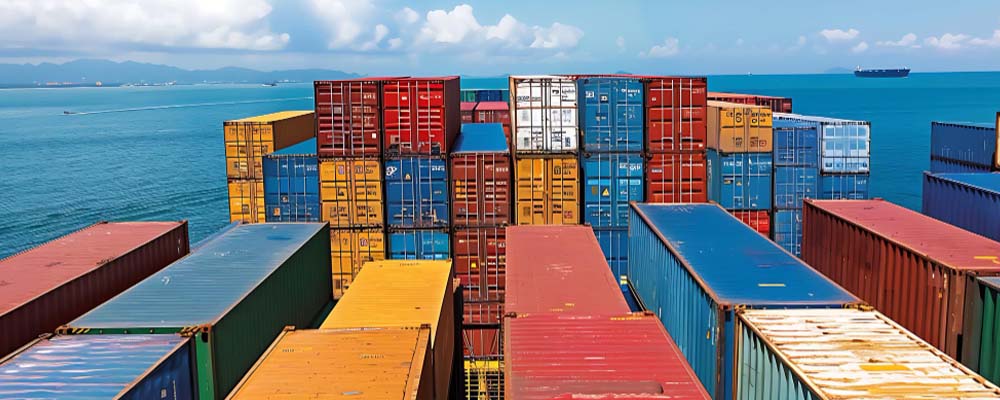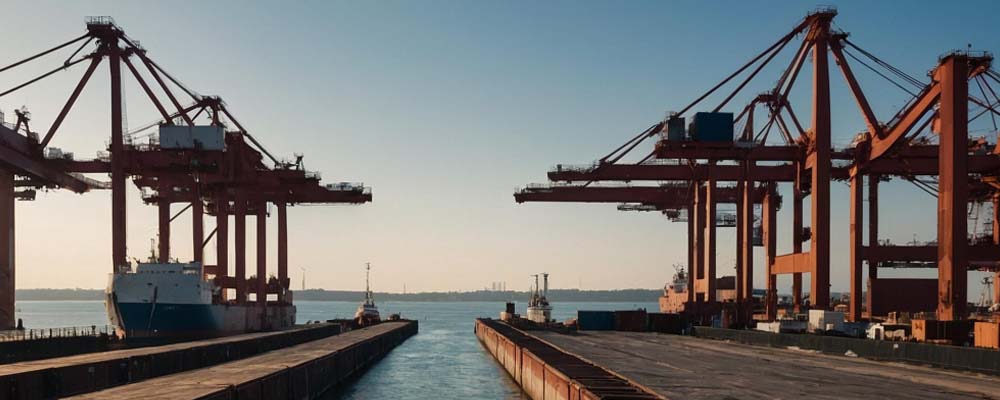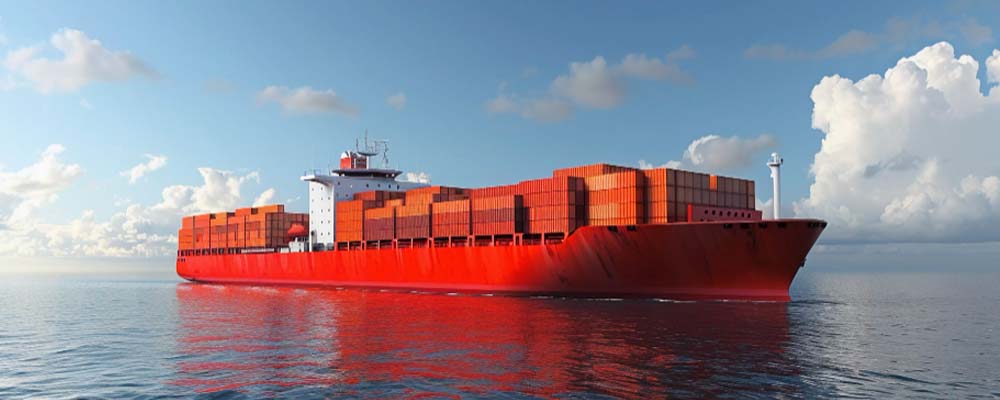
In the world of international trade, shipping containers to Argentina can be a complex endeavor. Whether you are a freight forwarding company, a logistics provider, an importer, or an exporter, understanding the intricacies of this process is essential for smooth operations. This comprehensive guide aims to provide you with all the necessary information to ship containers to Argentina efficiently. We will discuss various shipping methods, costs, transit times, main ports, and much more.
What are the Ways to Ship to Argentina?
Shipping containers to Argentina can be achieved through several methods, each with its own set of advantages and considerations. The primary methods include:
Sea Freight
Sea freight is the most common method for shipping containers to Argentina. It is cost-effective for large quantities of goods and offers various container sizes to suit different cargo types.
- Full Container Load (FCL): Ideal for large shipments, FCL allows you to rent an entire container exclusively for your cargo.
- Less than Container Load (LCL): Perfect for smaller shipments, LCL involves sharing container space with other shippers, reducing costs.
Air Freight
Air freight offers quicker delivery but comes at a higher cost compared to sea freight. It is suitable for time-sensitive shipments or valuable items that require quick delivery.
Multimodal Transport
Combining air, sea, and land transport, multimodal transport offers flexibility and efficiency. It is often used when direct routes are unavailable or when cost savings are possible through a combination of transport modes.
 What Are the Costs to Ship a Container to Argentina?
What Are the Costs to Ship a Container to Argentina?
The cost of shipping a container to Argentina varies based on several factors, including the type of cargo, container size, shipping method, and distance. Here are some key considerations:
Container Size and Type
- 20-foot container: Suitable for small to medium-sized shipments.
- 40-foot container: Ideal for larger shipments.
- Reefer containers: Used for temperature-sensitive goods.
Shipping Method
- FCL vs. LCL: FCL is generally more cost-effective for large shipments, while LCL is better for smaller loads.
- Air Freight: More expensive but faster.
Additional Costs
- Customs Duties and Taxes: Import duties, taxes, and tariffs can add to the overall cost.
- Insurance: Protects your cargo against potential damages or losses.
- Handling Fees: Charges for loading, unloading, and handling at ports.
What is the Transit Time When Shipping to Argentina?
Transit time varies depending on the shipping method and origin of the shipment. Here’s a general overview:
Sea Freight
- From the United States: Approximately 20-30 days.
- From Europe: Around 25-35 days.
- From Asia: Approximately 30-45 days.
Air Freight
- From the United States: Typically 3-7 days.
- From Europe: Around 4-8 days.
- From Asia: Generally 5-10 days.
Factors Affecting Transit Time
- Weather Conditions: Adverse weather can cause delays.
- Port Congestion: Busy ports may lead to longer waiting times.
- Customs Clearance: Efficient handling of paperwork can speed up the process.
 Main Ports in Argentina
Main Ports in Argentina
Argentina has several key ports that handle international shipping. Knowing these ports can help you plan your shipments more effectively.
Port of Buenos Aires
The Port of Buenos Aires is Argentina’s primary seaport and handles the majority of the country’s container traffic. It is well-equipped with modern facilities and offers excellent connectivity to inland destinations.
Port of Rosario
Located along the Paraná River, the Port of Rosario is another significant port, especially for agricultural exports. It is a vital hub for grain and oilseed shipments.
Port of Bahia Blanca
Situated in the southern part of Buenos Aires Province, the Port of Bahia Blanca is an important port for bulk cargo and petrochemical products.
Port of Mar Del Plata
This port primarily handles fishing and seafood exports. It is also equipped to manage smaller container shipments.
How Do I Find a Freight Forwarder in Argentina?
Finding a reliable freight forwarder is crucial for seamless shipping to Argentina. Here are some tips to assist you in finding the right partner:
Research and Recommendations
- Online Directories: Use resources like the International Federation of Freight Forwarders Associations (FIATA) directory, and Connecta network.
- Industry Associations: Organizations like the Argentine Association of International Freight Forwarders (AAACI) can provide recommendations.
Check Credentials
- Licensing and Certification: Ensure the freight forwarder is licensed and certified by relevant authorities.
- Experience: Look for forwarders with experience handling shipments to Argentina. Connecta has an extensive network of freight forwarders in the Argentina, who can assist you in moving your containers.
Read Reviews and Testimonials
- Customer Reviews: Check online reviews and testimonials to gauge the reputation and reliability of the freight forwarder.
- Case Studies: Look for case studies or success stories that highlight their expertise.
FAQs about Shipping Your Container to Argentina
How to Determine Shipping Costs to Argentina?
Shipping costs can be calculated by considering several factors:
- Container Size: Determine whether you need a 20-foot or 40-foot container.
- Shipping Method: Choose between FCL, LCL, or air freight.
- Additional Costs: Include customs duties, taxes, insurance, and handling fees.
- Freight Quote: Request quotes from multiple freight forwarders for comparison.
What Type of Cargo Can Be Sent in a Container?
Containers can accommodate various types of cargo, including:
- General Cargo: Clothing, electronics, furniture, etc.
- Perishable Goods: Fruits, vegetables, dairy products (using reefer containers).
- Hazardous Materials: Chemicals, flammable liquids (with proper documentation and handling).
What Paperwork is Needed for International Shipments to Argentina?
Proper documentation is essential for smooth customs clearance. Key documents include:
- Bill of Lading: A contract between the shipper and carrier, detailing the shipment.
- Commercial Invoice: Includes details of the transaction between the buyer and seller.
- Packing List: Provides a detailed list of the items in the shipment.
- Certificate of Origin: Certifies the country where the goods were manufactured.
- Import Licenses: Required for certain goods, depending on Argentine regulations.
 Conclusion
Conclusion
Shipping containers to Argentina involves a multifaceted process that requires careful planning and execution. By understanding the various shipping methods, costs, transit times, and key ports, you can streamline your operations and ensure timely delivery of goods. Additionally, partnering with a reliable freight forwarder and staying on top of necessary documentation will further enhance the efficiency of your shipments.
As the global trade landscape continues to evolve, staying informed and adaptable is crucial. To explore how our services can assist you in navigating the complexities of international shipping, we invite you to connect with us. We are here to support your business needs and ensure your shipments reach their destination smoothly and efficiently.




 What Are the Costs to Ship a Container to Argentina?
What Are the Costs to Ship a Container to Argentina? Main Ports in Argentina
Main Ports in Argentina Conclusion
Conclusion



